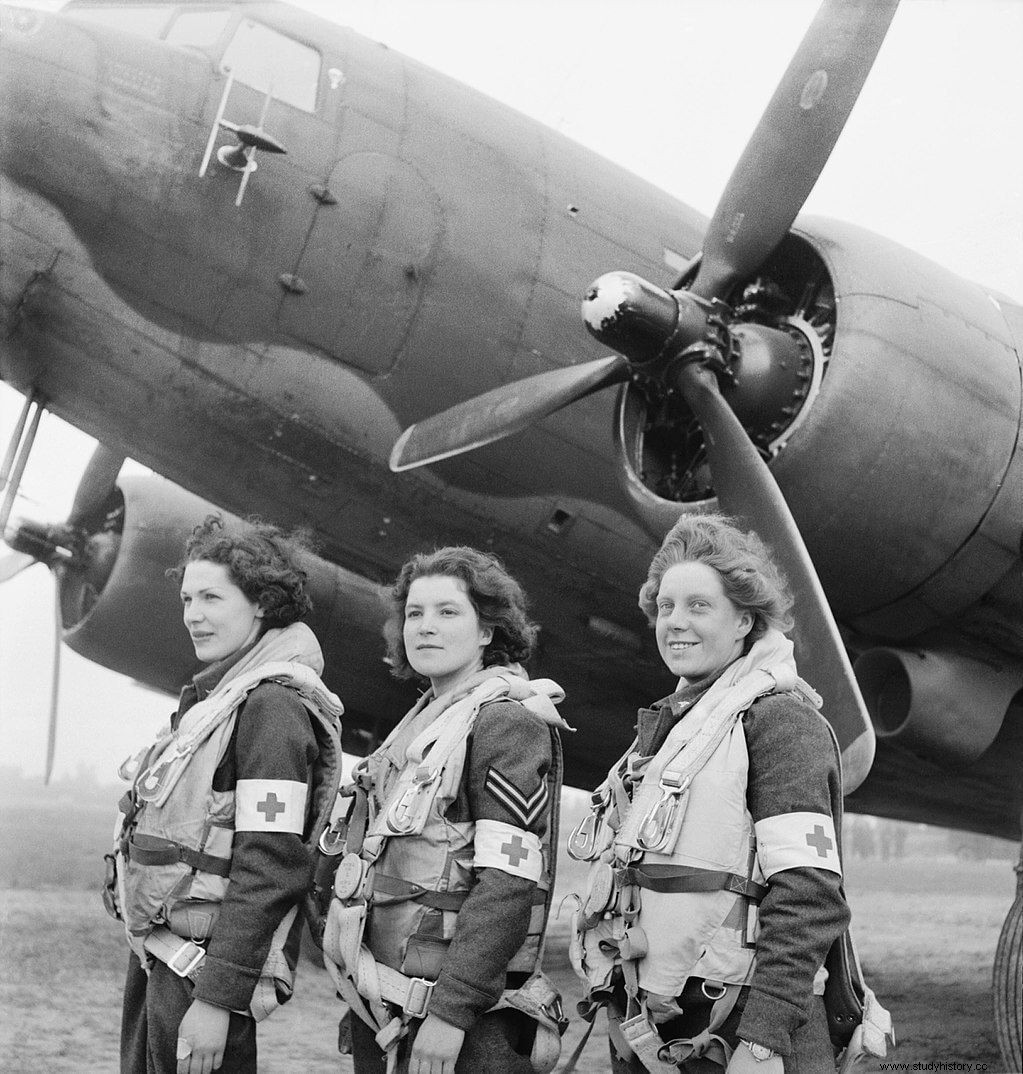
Already during the First World War a body was created women's auxiliary, linked to the RAF's own creation, the Women's Royal Air Force (WRAF), created together with the RAF in April 1918, although it was dismantled after the war, considering that it would not be useful in peacetime. In 1938, and following in the footsteps of the WRAF, the Auxiliary Territorial Service (ATS) was created, which would later give rise to the Women's Royal Naval Service and the better-known Women's Auxiliary Air Force (WAAF).
The Women's Auxiliary Air Force
The Women's Auxiliary Air Force emerged on June 28, 1939, embedded in the same structure as the RAF, although, in principle, with certain differences in uniforms and discipline. In fact, there was some debate on the change from the characteristic khaki color of the ATS uniforms to the characteristic blue color of the RAF uniforms, which would, along with the classic short hair, form the iconic image on propaganda posters. This service in a "mixed" environment, unlike the service in the ATS, although a separation of spaces was attempted, contributed greatly to the integration and change of mentality of the men who lived with them.
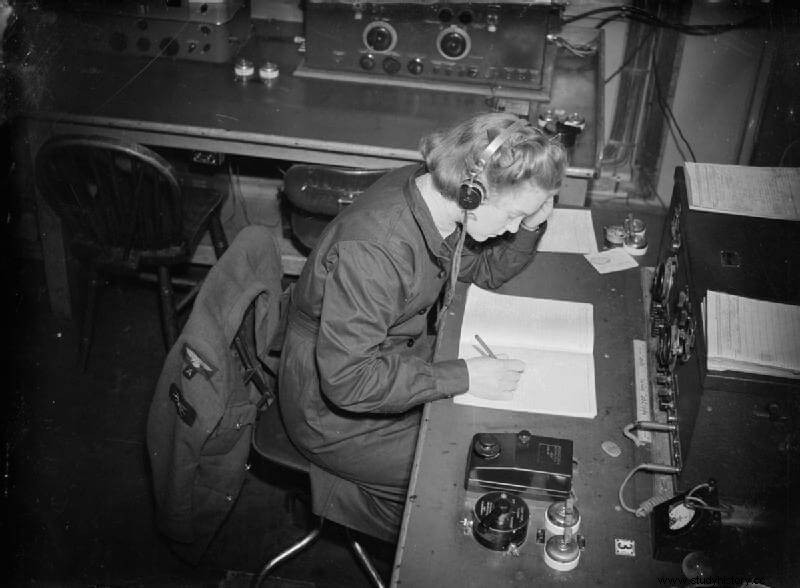
The work of women in the Air Transport Auxiliary (ATA), acting as pilots and transporting all types of aircraft, including fighters, from manufacturing or repair areas to the front line and airfields. Those known as “Spitfire Girls ” they had to be able to handle a wide variety of different aircraft, making a large number of trips during their service. Likewise, they flew in terrible conditions, without radio contact or the necessary instruments and with poor visibility, having to avoid both their own captive balloons and enemy planes.
Women who wanted to enlist in the Women's Auxiliary Air Force had to be between 18 and 43 years old, although it was even more limited for radar operators (with a maximum of 35 years ), while women who passed the quarantine were allowed to perform some tasks, such as cook. Likewise, a higher minimum age was requested for administrative and medical assistants. The nurses, for their part, did not belong to the WAAF, but were part of their own body, that of Princess Mary's Royal Air Force Nursing Service , which was exclusively female until 1980. Still, there were few truly effective age controls, and even fifteen-year-old girls have been known to enlist.
Although they started with just 1,700 members, by September 1939 they had about ten thousand volunteers, and by 1943 180,000 women had been recruited. Among all the female branches of the military, more than half a million women participated directly in the war. Within it, as we can see, work related to aviation seemed to have a special appeal.
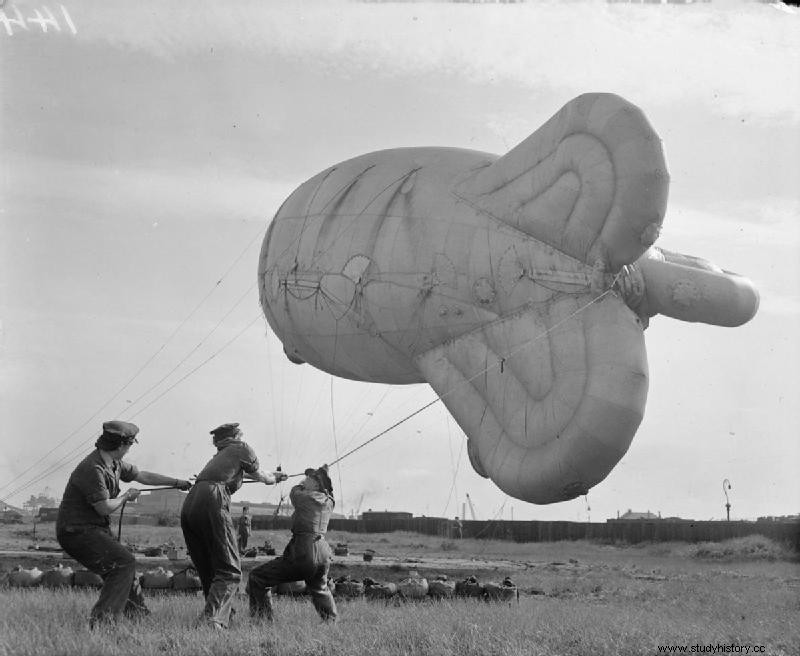
The first director of the WAAF, Katherine Trefusis-Forbes , she had already been an instructor in the ATS, and she faced the task of training women and the, much more complicated, of making RAF men aware of the value and necessity of women's participation. This bad image of the volunteers was reinforced by the unfair reputation of promiscuity and "ease" that had surrounded the women of the WRAF, breaking this with the classic image of female domesticity, and with the growing vision of working women as strangers “stealing” jobs from unemployed veterans, which has been on the rise since the 1920s. In fact, some of the volunteers had to put up with the continual threat that no decent man would marry a woman in uniform, repeated over and over again by parents and relatives.
This image of promiscuity It led not only to derogatory comments, but also to some cases of sexual harassment, although love stories also arose at RAF airfields and bases, not all with a good ending. Edith Kupp (born 1918, the same year the RAF was founded and whose 100th birthday she recently celebrated), who had been engaged to pilot Denis Wissler, was on duty when she had to respond to the announcement that her plane groom had been shot down and was falling, in flames, into the river.
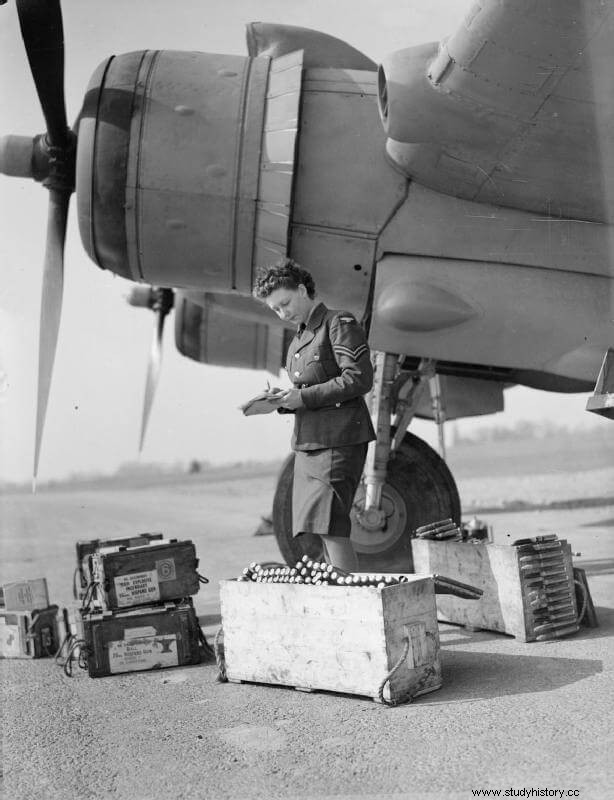
Also, they not only had to put up with derogatory comments for part of both civilians and other members of the armed forces, but faced other discriminatory treatment , such as a salary reduced to two thirds of what their peers received, reduced rations compared to men and a total lack of royal authority. Thus, female WAAF officers had no command over pilots and other personnel below their rank, while men had broad authority over them. A pioneering advance in this occurred in the ATA, in which, starting in 1943, wages were equalized for both genders.
The 1943 film, The Gentle Sex , was intended as a statement about the value of volunteers and their work in the war effort, although it also had a certain ironic tone and made clear its position on the superiority of men and the expected return to domesticity after the war.
Although the initial tasks of women in the WAAF were similar to those of their predecessors in the WRAF, that is, working as cooks, drivers or assistants, they soon began to participate in more tasks, previously exclusively male, such as radar operators, parachute packers, mechanics, electricians or captive balloon operators. In a short time, the only task that was vetoed, unlike other countries, was direct participation in combat flights. This meant that the discipline to which they were subjected was getting closer and closer to that of men, until it completely matched the regulations in 1941.
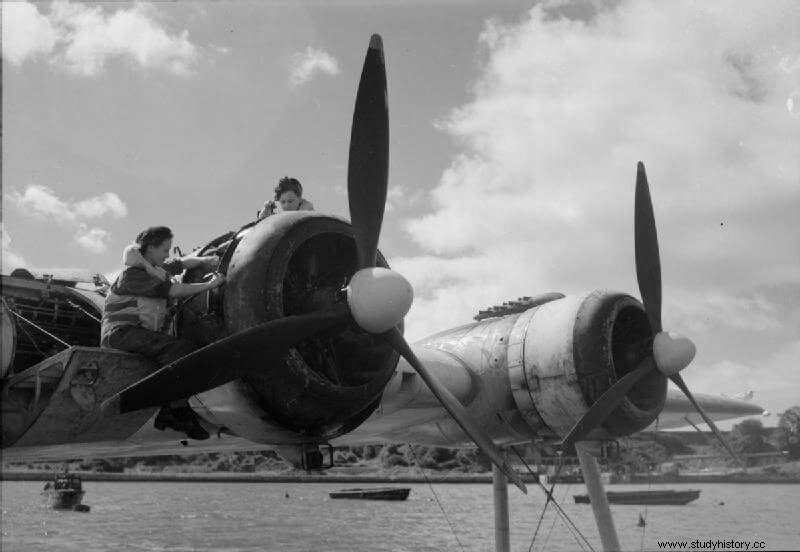
Although they did not make such flights, they did see located at the front and in the front line of combat , as the first German bombardments focused on airfields and radar stations (see Desperta Ferro Contemporánea #35:The Battle of Britain ), in which approximately half of the staff were female. This meant that, under enemy fire in these early years, nearly two hundred died and some four hundred were wounded.
Women in the Battle of Britain
Especially important was the work of women in intelligence tasks , especially in the analysis of aerial photographs at Danesfield House, the RAF base in Medmenham (Buckinghamshire), now converted into a hotel. Although her participation on the ground was also highlighted, working in the Special Operations Executive (SOE) , highlighting names such as Violette Szabo, who was executed in the Ravensbrück camp in 1945, or Nancy Wake, the White Mouse, the woman with the highest number of military decorations. Some women, like Lilian Rolfe, also executed at Ravensbrück, went from WAAF service to action on enemy terrain in the SOE, working with the French Resistance and broadcasting radio messages (for all such action, see Island of Hope , by Lynne Olson).

Finally, it is curious to mention that whoever saved the production of the well-known Supermarine Sptifire she was, precisely, a woman. The rebellious and eccentric Fanny Lucy Radmall, Lady Houston In 1931, when the government decided not to give the Royal Aero Club funding to further develop the initial Supermarine, it donated £100,000 at the time (about £5.5 million today) to continue work on it. Although she did not see her influence on the development of the war, since Lady Houston died in 1936, she decisively marked its future.
Although much remained to be done and it was not always something conscious, these women not only paved the way for female participation in tasks that were previously unthinkable, but also contributed to a slow change mentality about the role of women in society or the character, capacity and value of women.
Bibliography
Escott, Beryl. The WAAF. A History of the Women's Auxiliary Air Force in the Second World War , Buckinghamshire, Shire, 2003
Harris, Carol. Women at War in Uniform 1939–1945 , Sutton Publishing, Stroud, 2003,
Noake, Lucy. Women in the British Army:War and the Gentle Sex, 1907–1948 , Routledge, London, 2006
Stone, Tessa. “Creating A (Gendered?) Military Identity:The Women’s Auxiliary Air Force in Great Britain in the Second World War”, Women’s History Review , 1999, 8 (4), p. 605–624.
Sheridan, Dorothy. “Ambivalent Memories:Women and the 1939-45 War in Britain” Oral History 1990, 18 (1), pp. 32-40
Royal Air Force Museum (https://www.rafmuseum.org.uk/)
